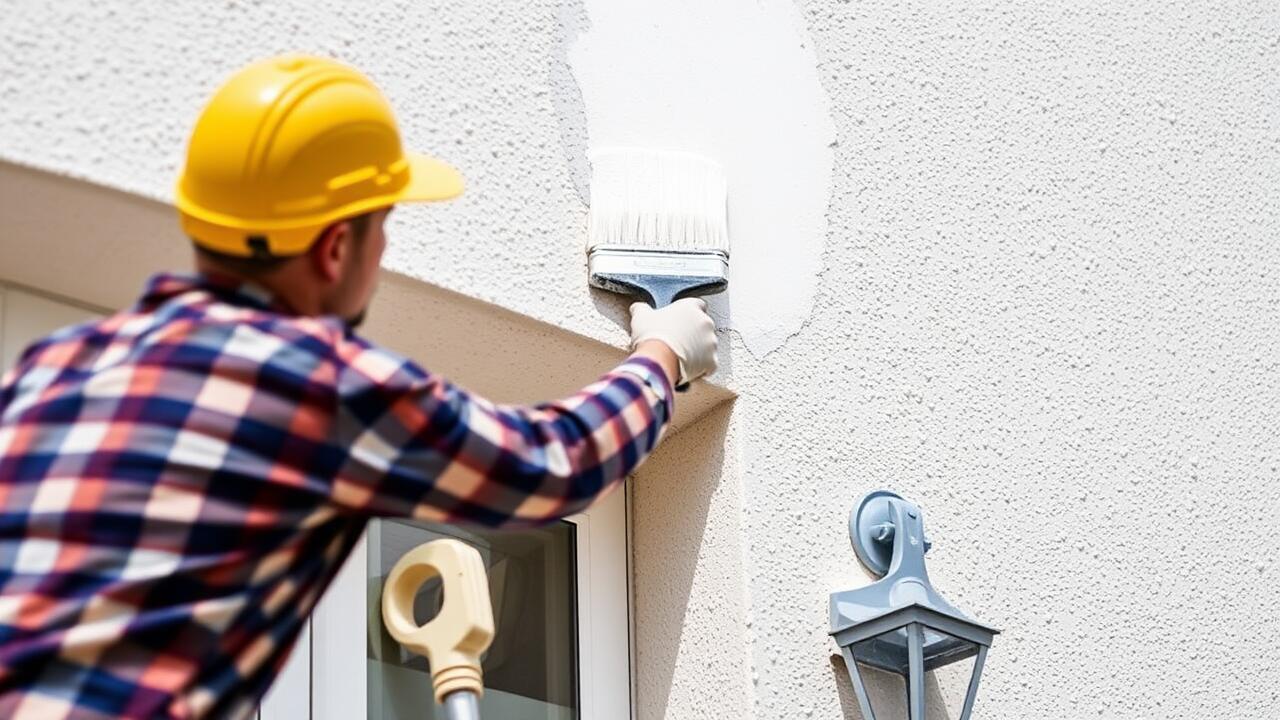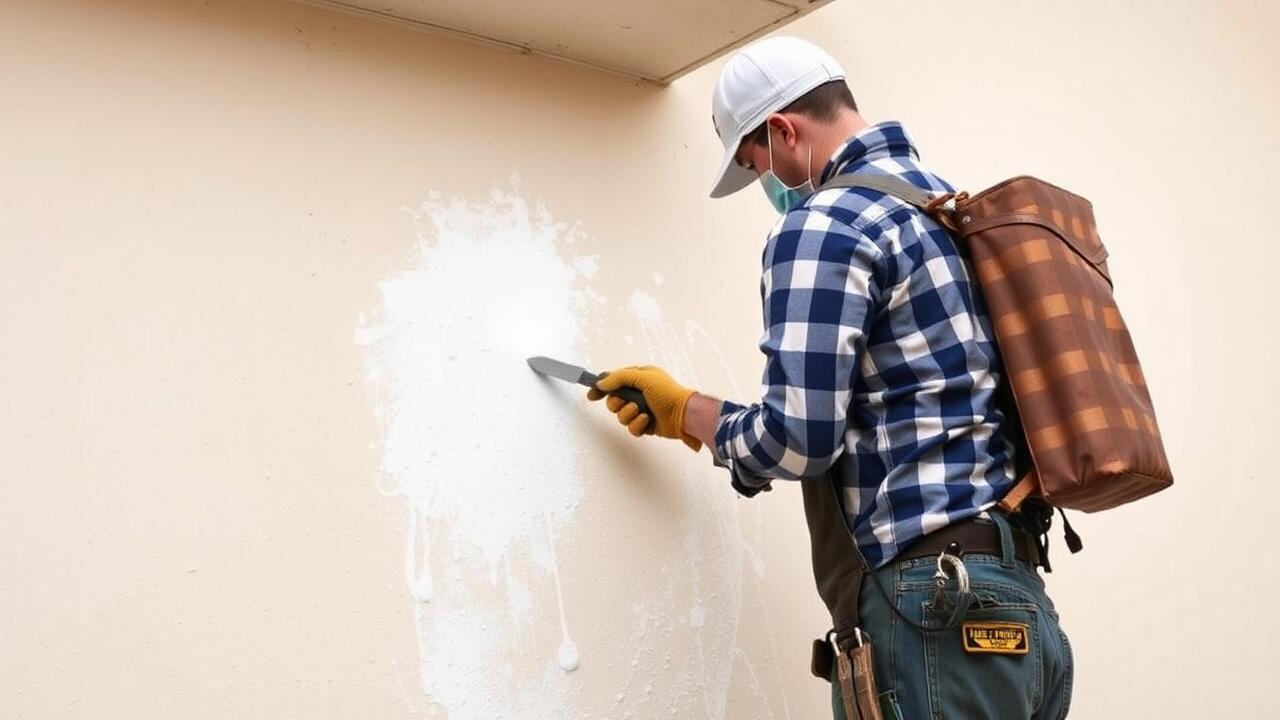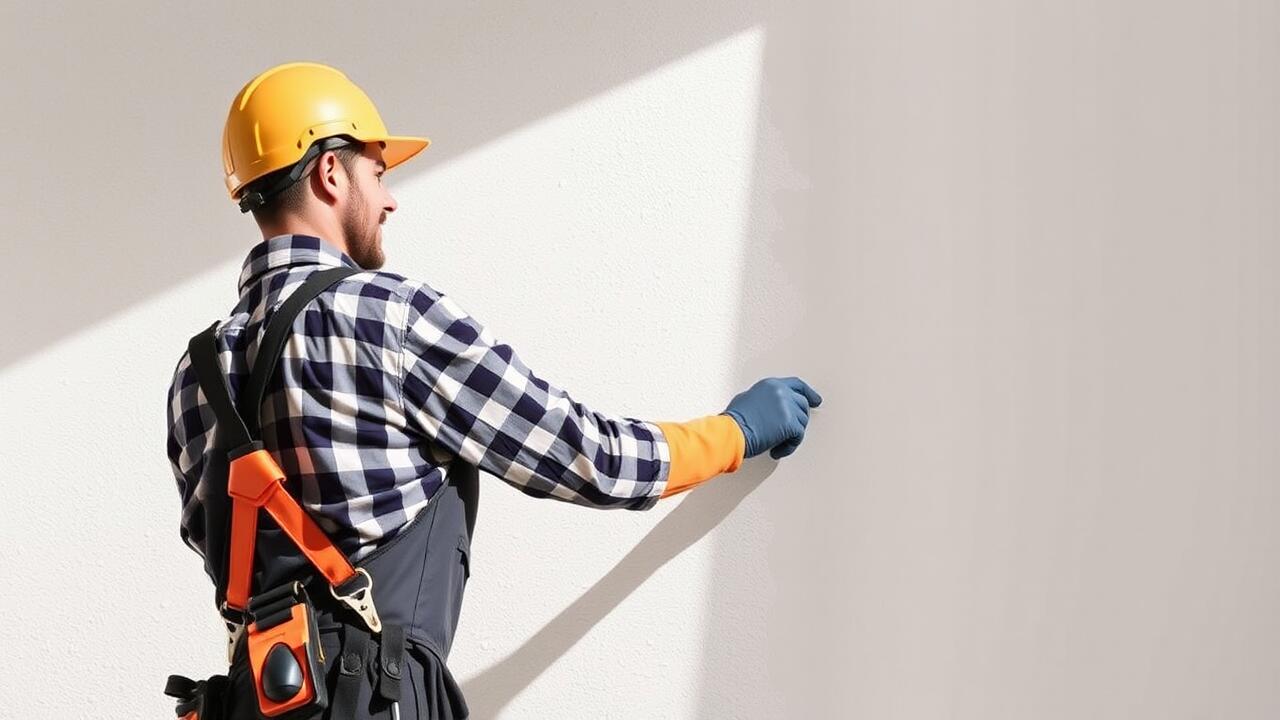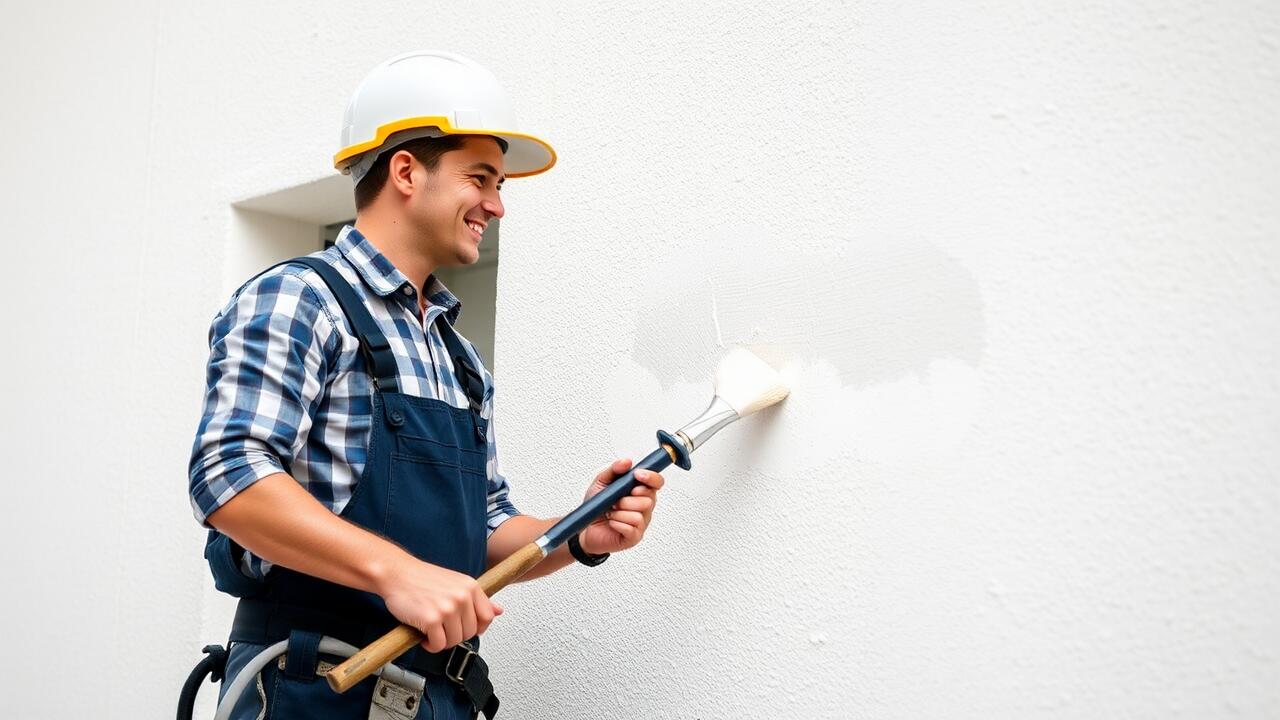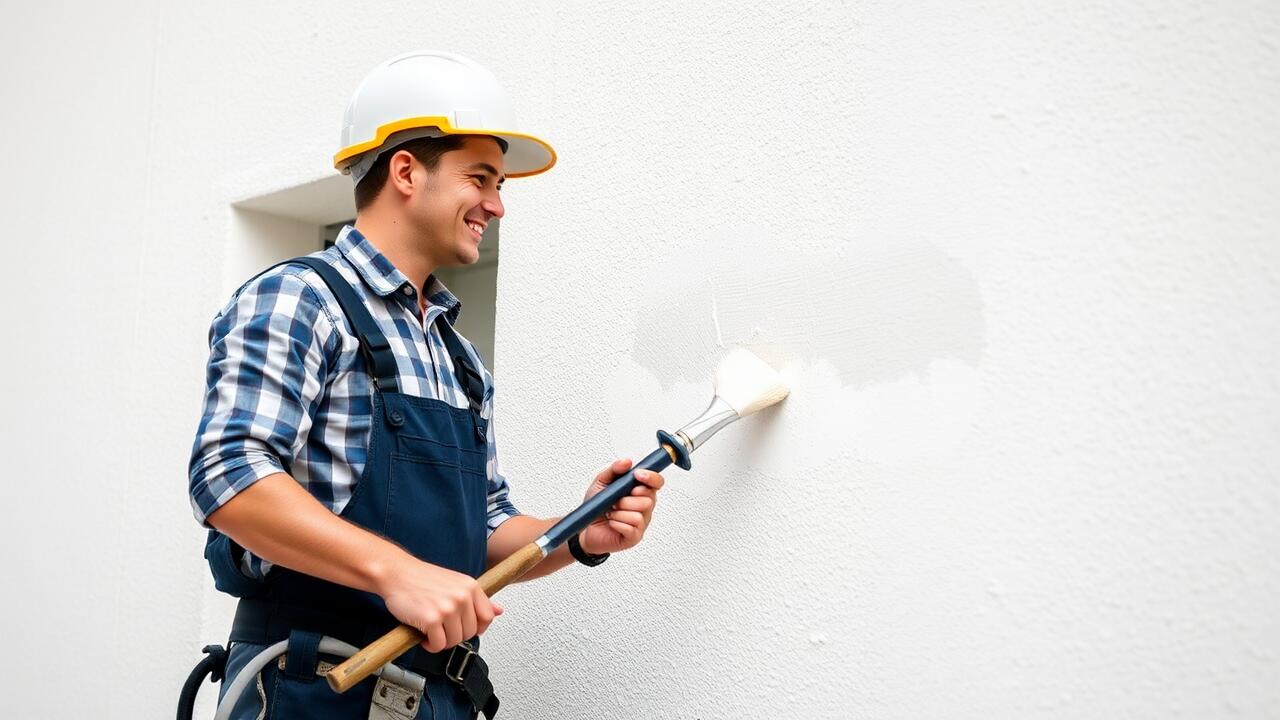
Maintenance Tips for Painted Stucco
Regular maintenance is essential for preserving the appearance and extending the lifespan of painted stucco. Start by inspecting the painted surfaces at least once a year. Look for signs of wear, such as peeling or fading. Address any issues promptly, as deterioration can worsen over time. Cleaning the stucco periodically with a gentle mixture of water and mild detergent prevents dirt accumulation and helps maintain color vibrancy. For areas exposed to heavy rain or direct sunlight, consider more frequent cleanings to guard against moisture problems and UV damage.
Another important aspect of maintenance involves touch-ups. Small areas of damage may arise due to weather or physical impact. Keeping some matching paint on hand allows for swift repairs, which prevents further degradation of the stucco. In regions like Chatsworth, Los Angeles, where the climate may fluctuate, proactive measures become even more crucial. Additionally, applying a quality sealer can enhance durability and provide extra protection against the elements, thereby ensuring that the paint remains intact for years to come.
Best Practices to Extend Lifespan
To increase the lifespan of painted stucco, proper surface preparation is crucial. Cleaning the stucco thoroughly removes dirt, mold, and loose paint, ensuring better adhesion for the new coat. Using a high-quality primer can also promote a sturdier bond between the stucco and the paint, reducing the risk of peeling or flaking. Regular inspections for any signs of wear or damage should be performed, allowing for timely touch-ups and repairs.
Selecting the right type of paint is another important factor in extending the lifespan of stucco finishes. The paint should be specifically designed for masonry or stucco surfaces to withstand moisture and temperature fluctuations. Experts recommend using elastomeric paint for its flexibility, which helps prevent cracking and allows the paint to expand or contract with the stucco. In areas like Chatsworth, Los Angeles, where weather can be unpredictable, these practices ensure that stucco painting remains durable and visually appealing.
Comparing Painted and Unpainted Stucco
When comparing painted and unpainted stucco, it's important to recognize the distinct visual and functional differences between the two finishes. Unpainted stucco boasts a natural, textured appearance that some homeowners find appealing. This option often highlights the material's inherent characteristics, allowing for a more rustic aesthetic. Conversely, painted stucco offers versatility in color, enabling homeowners to match their home's exterior with their personal style. The choice of paint can transform a home’s curb appeal dramatically, making it a popular option in areas like Chatsworth, Los Angeles.
Beyond aesthetics, the functional differences also play a significant role. Painted stucco can act as a protective barrier against the elements, potentially extending the life of the material underneath. However, this protection requires regular maintenance and touch-ups to prevent peeling or fading. In contrast, unpainted stucco may require less upkeep but is more susceptible to moisture and can suffer from weather-related wear without the aid of paint. With services like Stucco Painting in Chatsworth, Los Angeles, homeowners have the option to enhance both the longevity and attractiveness of their stucco surfaces.
Aesthetic and Functional Differences
The aesthetic appeal of painted stucco can significantly enhance a property's overall look. Color choices allow homeowners to express their personal style and match the exterior with the surrounding environment. Stucco painting in Los Feliz, Los Angeles, often reflects the vibrant character of the neighborhood, with hues that complement the local architecture. This flexibility in design ensures that painted stucco remains visually striking while accommodating various trends over time.
Functionally, painted stucco can provide an additional layer of protection against the elements. The paint acts as a barrier against moisture, UV rays, and other environmental factors that can deteriorate stucco surfaces. In areas like Los Feliz, where weather conditions can vary, maintaining well-painted stucco can help prevent issues like cracking or mold growth. This not only contributes to the longevity of the material but also minimizes the need for repairs, making it a practical choice for homeowners looking to preserve their property.
Typical Lifespan of Paint on Stucco
The typical lifespan of paint on stucco varies based on several factors, including the quality of the paint used, local climate conditions, and the age of the stucco itself. Generally, a well-executed paint job can last anywhere from five to ten years. Areas with extreme weather, such as high humidity or intense sunlight, may require more frequent touch-ups and maintenance. Homeowners in regions like Chatsworth, Los Angeles, where temperatures can fluctuate significantly, should pay particular attention to their stucco's condition.
Regular maintenance is essential to prolonging the life of painted stucco. Routine inspections for signs of peeling or fading can help identify potential problems early. Ensuring proper drainage and addressing any moisture issues is also crucial in maintaining the integrity of the paint. For residents in Chatsworth, Los Angeles, investing time in maintenance can yield a more durable finish and enhance the overall appearance of their homes.
Average Duration and Influencing Factors
The average lifespan of paint applied to stucco surfaces typically ranges from five to ten years, though this can vary based on several factors. The quality of the paint used plays a significant role in durability. Higher-quality, breathable paints that are specifically designed for stucco can extend the longevity of the finish. Application techniques such as proper surface preparation and the number of coats also influence how long the paint will last.
Environmental conditions impact the lifespan as well. Stucco surfaces exposed to harsh sunlight, rain, or extreme temperatures may experience more wear over time. In areas like Chatsworth, Los Angeles, where the climate can be dry and hot, regular maintenance becomes essential to preserve the painted surfaces. Homeowners should consider seasonal inspections to identify signs of wear and address issues promptly, ensuring the painted stucco remains in good condition for as long as possible.
FAQS
How long does paint typically last on stucco?
The lifespan of paint on stucco can vary, but on average, it lasts between 5 to 10 years. Factors such as climate, paint quality, and maintenance can influence this duration.
What factors can affect the longevity of paint on stucco?
Factors that can affect the longevity of paint on stucco include weather conditions, the quality of the paint used, surface preparation, and the frequency of maintenance.
Can I paint over existing paint on stucco?
Yes, you can paint over existing paint on stucco, but it’s essential to properly prepare the surface by cleaning it and ensuring there are no peeling or flaking areas before applying a new coat.
How often should I repaint my stucco?
It’s generally recommended to repaint stucco every 5 to 10 years to maintain its appearance and protect it from moisture and other environmental factors.
What are the benefits of painting stucco?
Painting stucco can enhance its aesthetic appeal, provide protection against weather elements, and improve insulation. It also allows homeowners to customize the color and style of their property.
